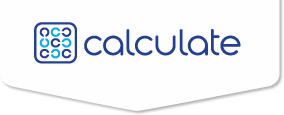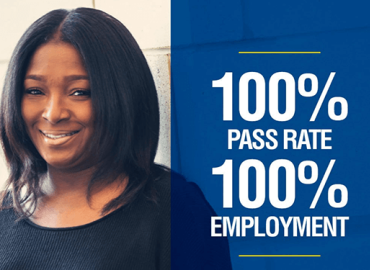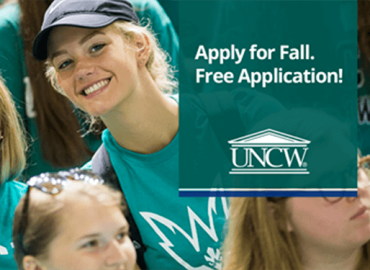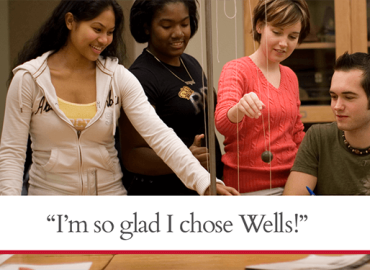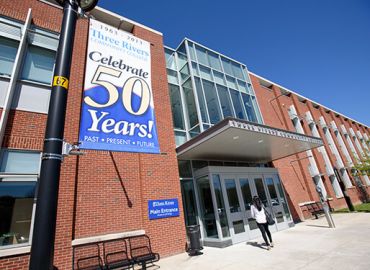When your next website redesign comes around, arm yourself with these seven core principles and produce a website that is worthy of the cost, time, and effort that went into building it. And if you can work on a governance strategy, perhaps you can stave off degradation and actually save your marketing dollars for other initiatives.
If there’s one person who can increase enrollment, it’s Joel Wincowski. I’ve seen it firsthand, but his record speaks for itself. With more than 45 years of enrollment management experience, Joel has raised net revenue and enrollment at nearly every type of institution (public, private, flagship, religious, single-gender).
The start of the spring semester brings a familiar pressure to most admissions teams. Now is the time to focus on the all-encompassing task of confirming the incoming class. There are multiple strategies to this step beyond sending a welcome packet. Like enrollment management in general, they all have value (if done correctly). The challenge is having the time, while also maintaining the ongoing cycle of enrollment (more on that below).
The number and frequency of school closures isn’t all that surprising. At its core, it’s a simple supply and demand issue. There just aren’t enough motivated prospects to fill all of the vacant seats throughout the country and the impending enrollment cliff is only going to make matters worse.
The number and frequency of school closures isn’t all that surprising. At its core, it’s a simple supply and demand issue. There just aren’t enough motivated prospects to fill all of the vacant seats throughout the country and the impending enrollment cliff is only going to make matters worse.
The National Student Clearinghouse reports that transfer students are on the rise and now account for 13.2% of all undergraduates, up from 12.5% in 2022. Now is the time to start recruiting them for the spring semester. Here’s how and why.
There is no “one size fits all” approach to community college enrollment marketing but there are certain traits they share that can guide your strategy. Here are the steps you should take to craft your unique enrollment marketing strategy for your community college.
According to Ruffalo Noel Levitz’s 2022 "Cost of Recruiting an Undergraduate Student Report," it costs: $2,795 per undergraduate student at a private school and $494 per undergraduate student at a public school.
How do you evaluate the success of a digital recruitment campaign, especially when using a third-party vendor? Which of the many metrics included in the campaign report show success in reaching the right prospects and moving them through the admissions funnel?
It’s May 2022 and higher education is still recovering from the impact of COVID-19. If recent headlines and old patterns hold true, though, there’s an enrollment opportunity ahead. Here’s why, what, and how to prepare.
I want to share this particular digital recruitment campaign for two reasons: its success in delivering leads and what it says about messaging.
Although the nation’s top institutions are experiencing a surge in applications, most of the colleges I know are facing COVID-related enrollment shortages. There’s no doubt the virus has placed intense strain upon an already-stressed system.
With thousands of colleges and universities in the U.S., students have plenty of options – so how can you get them to consider your institution? By identifying and marketing your school’s distinctive success story.
I’ve been interviewing college students for more that 20 years and one question I always ask is, “What made you choose this particular institution?” The most consistent response (by far) goes something like this: “Once I visited campus I just knew. It felt right.”
The beauty of inbound marketing is that it gives us the capacity to attract right-fit students to your institution. Rather than putting up a billboard and hoping they drive by, see it and respond, we can draw them in. How? By knowing what information students seek and how they search; by creating authentic and engaging website content that matches their search terminology and inspires them to take the next step.
There’s ample research showing how high school students search for (and evaluate) colleges. This data offers insight that is useful to enrollment professionals. By knowing what students search for and how, you can deliver the information they’re seeking in the time allotted, inspire them to take the next step in the enrollment cycle, and capture their contact information
The most effective thing you can do for enrollment is to update your website with enrollment-generating strategies. This will give it the ability to capture high-quality leads and move prospective students through the admissions funnel.
When it comes to digital marketing for higher education enrollment, technology can be a dangerous thing. I’m not referring to the dark web, viruses, ransomware, etc. I’m referring to how technology is often seen as the “solution” to problems when, in most cases, it’s really the tool that facilitates the processes that solve the problem.
May 1 came and went quietly, reiterating the fact that nothing is typical about the current admissions cycle. The impact of Covid-19 remains to be seen and there have been few positive enrollment reports — so, here’s one we’re happy to share and happy to have been part of.
Higher Education has the notorious distinction of being stuck in the past when it comes to enrollment marketing. Yup, nothing screams “cutting-edge” quite like a dining room table full of viewbooks, postcards, and unopened letters from “leading” colleges and universities throughout the country.
It’s possible to generate leads and drive yield during this time of social distancing, but it won’t be “business as usual.” We can no longer rely on the traditional face-to-face events like admitted student receptions, open houses, and college fairs. Instead, we need to shift our focus and resources to online strategies.
It’s transfer season, the time of year when 1/3 of the nation’s college students look to switch schools. Studies like the National Student Clearinghouse Research Center’s Signature Report estimate that 1.3 million students transfer each year. One point three million. That’s a big piece of the recruitment market. It’s no wonder so many institutions have amped up their transfer recruitment efforts. But has it paid off?
In our last post, we demonstrated how digital marketing campaigns can yield significant enrollment results — especially at key points of the recruitment cycle. In another example, we worked with the University of North Carolina, Wilmington (UNCW) to grow summer enrollment for transfer and late-to-enroll first-year students.
The best enrollment manager I know taught me this: great enrollment rarely comes from one big idea or change in approach. Rather, it grows in bits and pieces, from identifying small pockets of potential that lead to recruiting “10 more students here and 20 more here” until it adds up to a significant increase.
The recruitment cycle is fraught with make-it-or-break-it deadlines, perhaps none more critical than May 1, Decision Day. As prospective students weigh their acceptance and financial aid offers, colleges ramp up communications in an attempt to secure deposits.
I love the way the Swarthmore College admissions team speaks to potential recruits. Too often, colleges fail to consider who they are talking to and how best to ignite their interest. Swarthmore appears to have taken this into account, writing to the undergraduate demographic with refreshing honesty and humor, while also lending a helping hand.
There’s a lot of buzz in higher education marketing on the topic of storytelling — and for good reason. Stories offer a memorable way of dispensing information, connecting to others, and influencing purchase decisions. Major brands (like Starbucks and Warby Parker) are adept at using the internet’s visual and verbal capacities to share their stories and drive sales. Higher education marketing and recruitment offices needs to do the same — but what exactly does that mean?
Want an enrollment campaign that keeps on giving? Go digital. In addition to the many obvious reasons why college and universities should be recruiting online, here’s another: Digital enrollment campaigns (when done right) fuel all other online recruitment investments — most notably, an institution’s website and social media presence.
Higher education always seems to be “making a case” for the liberal arts and humanities. We continue to fight a cultural misconception, one that diminishes the value of analytical thinking, effective communications, and ethical decision making in exchange for earnings.
Last week, the Western Interstate Commission for Higher Education (WICHE) released its demographic report, Knocking at the College Door. Two findings, regarding the size and scope of future recruitment classes, will resonate with enrollment management professionals: 1.) The number of high school students across the nation has become stagnant, following a 30-year period of steady growth; 2.) The racial and ethnic mix of this pool has diversified dramatically (particularly with Hispanic and Asian populations) and is expected to do so through 2025, when students of color will represent a majority.
I’ll admit it: I’ve had a difficult time getting “back to normal” since the presidential election. The business of higher education recruitment feels secondary to issues of safety and security on college campuses. My news feed has been dominated by reports of hate crimes, pending deportations, fake news sites, sanctuary cities, the federal overtime rule, etc.
All research on how students search for college cites the institutional website as the “make it or break it” point early in the search. Consider this: 80% of college bound high school seniors say they judge an institution on its website. Furthermore, 60% equate the quality of a website to the quality of education provided by the institution.
On December 1, 2016, the new federal rule mandating that employees earning less than $47,476 per year and working more than 40 hours per week must be compensated for overtime goes into effect. This rule will have an impact on enrollment management teams throughout the country that rely extensively on their overworked admissions counselors to recruit class after class of students.
Inside Higher Ed’s recent report on the decline of community college enrollment hit home — especially because I was deep into writing an enrollment campaign for Three Rivers Community College at the time. Having spent several weeks interviewing students and alumni, I heard story after story showcasing the college’s strengths: quality academic and workforce programs, career success, student-faculty mentorship, affordability, support for work/life balance, etc.
Is anyone in higher education more overworked and underpaid than the college admissions counselor? Given the importance enrollment has on the health and stability of an institution, one would think that the most personal touchpoint in the prospect’s journey would be given more weight than the entry-level, revolving door approach the position of admissions counselor currently possesses.
After all the time, money, and energy you spent on your website. After all the glorious content you created to brag about your rigorous academic programs, your illustrious school history, and your vibrant student life. After all the bells and whistles you put in there to delight and entertain them. How dare they leave without spending at least 10, 30, or more minutes consuming all of your great content!
An honest assessment of a college’s student satisfaction level can offer valuable insight into student behaviors — and how those behaviors affect the bottom line.
The rise of digital marketing has provided higher education marketing teams with an unprecedented toolkit of tactics and methods for reaching their intended audiences. We are now at a point in time where 1 to 1 marketing is not only a reality but it’s an affordable reality. Psychographic and demographic targeting are a marketer’s dream and the inherent nature of the digital medium allows us to modify and manage our campaigns mid-flight.
Your institutional website is your most important marketing asset due to its reach, depth, and popularity. What other asset is globally accessible 24/7/365, covers every inch of your institutional story, and has been viewed by just about every single one of your constituents? The answer is none. No other asset even comes close.
As former employees of a University’s enrollment management team, the Calculate principals have the unique viewpoint of having been both the client and the consultant on digital advertising projects. Our philosophy on how to properly strategize, produce, and evaluate a digital marketing campaign was born from our own frustration.
What if 75% of college-bound students told you that one piece of your marketing and enrollment strategy mattered more than anything else? What if 80% of high school seniors told you they judged your institution by this one component? Chances are you would make that one component a priority. That critical piece is your institution’s website.
Over the past month, I’ve interviewed 20 or so students for different projects on different campuses. The goal of each interview was the same — to get them talking so I can hear their story: where they came from, why they came to this particular college, and how they’ve changed since. What I’ve heard recently reminded me (once again) of the innate power of the human story — in life and in marketing.
Adult learners: They represent 40% of the higher education market and they are (generally speaking) the type of student that every institution wants: mature, focused, and committed to success. So why not make it easier for them to find your institution and enroll?
Just as I was starting a new digital enrollment campaign for a community college, the National Student Clearinghouse Research Center released its report on the effectiveness of community colleges as pathways to degree completion. It’s always nice when the research matches the experiences of those who live the day-to-day reality — in this case, the students at Three Rivers Community College (TRCC) in Connecticut.
As soon as an enrollment-driven website is up and running, you will see results. Prospects will complete forms (because they are highly targeted), which will flow into your admissions funnel. Your institution will come up in a prospects’ search (because of the SEO content). How many of these leads turn into applicants and accepts? Much of that depends on your enrollment team and their tactics. An enrollment-driven website will definitely bring in leads (good ones, because they are targeted to fit the institution), but the admissions staff needs to convert them.
I worked for years in higher education marketing before I knew the value of an enrollment-driven website. It seemed like every 3-5 years we would “re-do” the website but it always felt like an untamed behemoth. Great marketing nuggets were there, but they were buried deep within.
What if 75% of college-bound students in the U.S. told you that one piece of your marketing and enrollment strategy mattered more than anything else? What if 80% of high school seniors told you they judged your institution by this one component? Chances are you would make that one component a priority.
Mary Meeker’s 2016 Internet Trends report, delivered June 1 at Silicon Valley’s Code Conference, did not disappoint followers of her much-anticipated perspective. Rich with data, the report dove deep into the online behaviors and trends that affect the global market.
Bad news comes in threes. Whether you ascribe to such superstitions or not, this one felt true when faced with last week’s news that yet another small, liberal arts college is closing its doors. Kentucky’s St. Catharine College was the third such closure in as many weeks, following similar announcements by Burlington and Dowling Colleges.
Ophelia approached her college search like a mindful consumer — she began by collecting data in order to make the best possible purchase. I know, I know … we cringe at the thought of higher education being reduced to a commodity, but from the student/family perspective it is one of life’s greatest purchases — in a market rich with options.
Websites have an enormous impact on students’ decision-making and are often under-utilized for their enrollment capabilities. We can assume students come to a website because they have a certain level of interest in the institution. What happens next definitely affects enrollment — and we know this because of what they themselves report.
May 1, which looms large in the minds of admissions professionals, has come and gone, marking the end of the recruitment cycle. Now we tally up our deposits, take a vacation, and then start preparing for the next cycle, right? Hardly.
Maybe (just maybe) recruitment would be easier if we listened to what college-bound students tell us – especially about what they’re looking for and where they look. The good news is, they’re forthright with the information. Study after study reveals the same basic facts: Institutional websites matter (perhaps more than anything else); prospective students search for schools online; they look for specific information, which they fully expect us to deliver.
It wasn’t that long ago when community college enrollment was flourishing — or so we thought. Yet, a recent article in The Chronicle of Higher Education reveals an underlying long-term decline. In spite of the admissions increase brought on by the recession, community colleges have been steadily losing their piece of the higher ed market: From 40-44% in the period from 1980-2002) to the current 37.9%, an “all-time low.”
The value of a humanities degree is a topic that hits close to home. I’ve lived it (BFA in Dramatic Arts, MA in English) and preached it — especially to my own four children when I see the public school system nudging them towards more “lucrative” fields.
In the near future, enrollment teams will be recruiting a different student population — one that is predominately “minority.” How near? By the time this year’s recruits graduate from college, more than half of the nation’s children will be part of a minority or ethnic group.
I wonder what it’s like in the Villanova admissions office these days. I always imagined that working enrollment at a Division I school — especially after an NCAA victory — would be a piece of cake: you know, opening envelope after envelope, plucking the best candidates, nothing but abundance!
Today, students apply to multiple schools (College Board cites 5-8) meaning for each one, they research, visit, gather recommendations, apply, etc. All this energy and expense takes a toll — on students, families, and on the school’s admissions staff.
Today’s students, members of Generation Z, are the first true digital natives. They are online not only to socialize, but to complete tasks — a key one being college search.
More is expected of enrollment management professionals these days than is realistic. Not only are we supposed to be experts in traditional recruitment, but we also need to be skilled digital marketers — a field we all know requires constant vigilance, evolvement and expertise.
A small university, where we worked at the time and piloted Calculate's website recruitment strategy, was one of 25 organizations being considered for this annual inbound marketing conference. A few weeks later we learned we were one of 8 winners — and the first higher education institution to win in the Forum’s history.
Though highly regarded for its health programs, this particular institution — a private Catholic women’s university — was struggling with enrollment. Calculate’s founders proposed a complete overhaul of the existing website utilizing inbound marketing strategies.
Like most enrollment management professionals, we used to spend a significant portion of our budget on student search — purchasing names and services through one of the big firms. It was a critical buy: these names were the focus of all our enrollment efforts.
This institution — a small, liberal arts university — had experienced a substantial increase in its undergraduate enrollment so turned its attention to graduate recruitment. In particular, the administration wanted to meet enrollment capacity in 4 online master’s programs. Calculate recommended a digital campaign that would attract “perfect-fit” prospects based on demographic and self-reported traits.
Our own foray into digital search started when the university we worked for hired a digital marketing firm. At first, it sounded pretty good: they would develop digital ads to promote a specific academic program and we would select the target audience.
Was the creation of great content the #1 priority during your last website redesign? If you’re a typical institution, then the answer is probably “no.” I’m willing to bet that much more attention was paid to the design phase of the project. After all, the design is the part that everyone sees. It’s your style. Your curb appeal.
I like to refer to a website as Grand Central Station because it’s your primary marketing and communications hub. Prospective students find your website through a Google search. Inbound and outbound marketing tactics drive traffic there. Your program brochures have your website address printed all over them.
Last fall, we were hired by a state university to conduct a digital search campaign centered on 24 academic programs. The campaign launched November 5 and will run for 4 months. Because this was a new client, we had no insight into the university’s programs and culture — so we started with the essential: Research.
